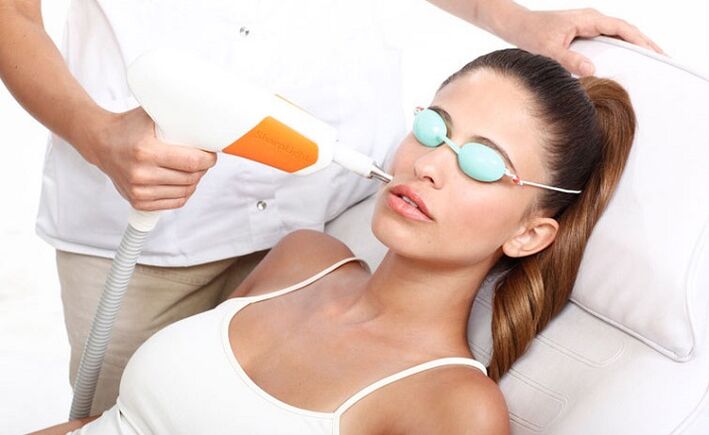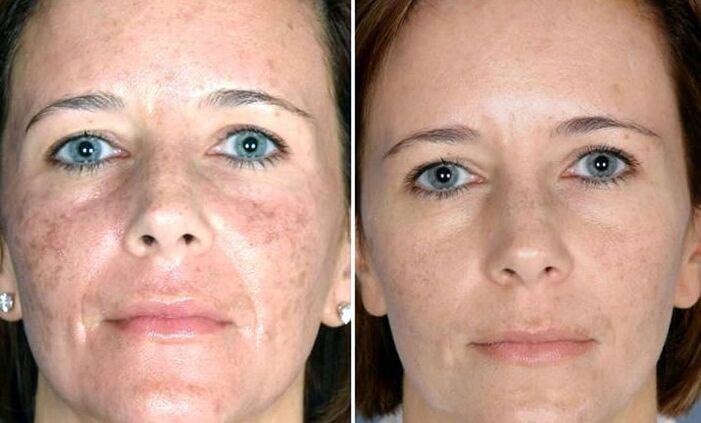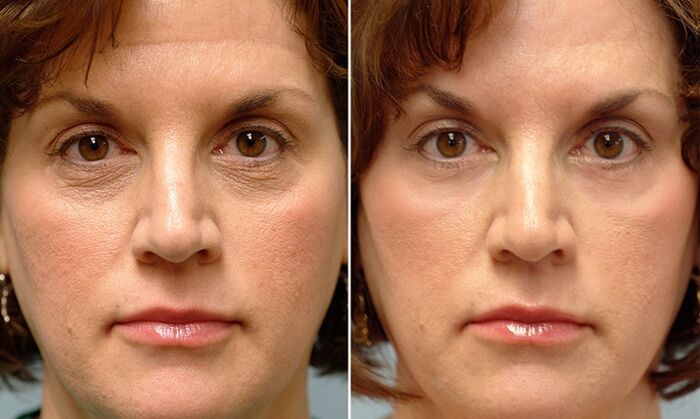From the time of Cleopatra until today, there is no representative of the fair sex who would not want to prolong the youth and beauty of her skin. Modern medical science never ceases to amaze with innovations in the field of cosmetology, offering various anti-aging surgeries and procedures.
Particularly popular are the techniques that allow you to get rid of the external signs of aging without resorting to a scalpel or Botox injections. Fractional laser rejuvenation is essentially the fastest and safest way to combat skin aging.

What is a fractional laser and how does it "rejuvenate"
When the laser hits the skin, a deep burn appears. The active therapeutic (regeneration) procedures begin, which provide the desired cosmetic result. This procedure is also known in cosmetology as laser skin reappearance.
If the same laser is divided into several micro-rays, then the so-called fractional laser beam is obtained. Such a ray will no longer work on the skin as a whole, but as an intermittent microgrid. Burns after fractional laser heat treatment are detected in the form of a large number of microvibrations on intact skin. This significantly reduces the trauma of the procedure (and the pain as well) and allows the skin to heal faster.
After laser exposure, intact healthy skin cells begin to actively divide, forming collagen and elastin, which provide elasticity and a youthful appearance to the skin.
Varieties of fractional photothermolysis
Ablative
Under the action of laser radiation, water evaporates from the tissues and an "open" microscopic wound is formed, around which damaged (burned) cells are located.
During the treatment, a strong lifting effect appears, but there is a risk of infection penetrating into the deep layers of the skin.
Non-abstract
Radiation is used, which leaves the skin intact, so no evaporation from the tissues and the formation of an "open" wound. The burn forms and heals under the skin, so there is no risk of infection, but the rejuvenating effect of this procedure is less intense.
The cosmetologist chooses the method of fractional rejuvenation individually, depending on the condition and type of skin.
Effects and benefits of fractional laser thermolysis
The main difference between the technique and all other procedures is the optimal balance between safety and efficiency.
Main advantages:
- the ability to affect any part of the body (including the décolleté, neck, eyelids)
- a wide range of indications;
- physiology (the area of the lesion is only 20% of the total area treated with the laser).
- short healing period (2-7 days)
- anesthesia method - application?
- it can be used on people with dark skin (as it does not cause hyperpigmentation);
- the duration of the result (from one year to several years).
The disadvantage is the insufficient knowledge of all aspects of the effect of a fractional laser, as the technology itself has recently appeared.
Indications for fractional rejuvenation:
- wrinkles (of any depth and position)
- reduction of the elastic properties of the skin.
- swollen pores
- coloration;
- acne;
- spider veins
- scars (postoperative, residual after acne)
- stretch marks (streaks), including the skin of the mammary glands.
Laser fractional thermolysis characteristics
A few days before the photothermolysis procedure, the cosmetologist may prescribe (if appropriate) antibacterial or antiviral drugs in prophylactic doses.
On the day of fractional rejuvenation, it is necessary to completely exclude physical activity, smoking and alcohol consumption.
Before the procedure, the skin is thoroughly cleansed and treated with a special anesthetic cream. In some cases, no anesthesia is required.
The effect of the laser is felt as "tingling" or "tingling". The duration of the procedure (from several minutes to one hour) and their number are selected separately. After the laser treatment, a soothing nourishing cream is applied to the skin.
Skin monitoring:
- Moisturize the skin with a special cream 2-3 times a day (within 2 weeks).
- Protect the skin from ultraviolet radiation for 2 months (do not visit the solarium, use sunscreen with a protection factor of at least 30).
- Do not use peels and exfoliation (within 2 weeks).
- Do not use cosmetics containing salicylic acid and retinol (within 2 weeks).
- do not wear compression underwear for several days (if fractional photothermolysis has taken place in the body).
- Limit (exclude) smoking and alcohol throughout the treatment (reduce skin regenerative functions).

On average, the recovery period lasts up to 3 days after laser fractional thermolysis removal and up to 7 days after abstract thermolysis
The skin changes after the procedure
For 1-3 days after intense laser exposure, redness, discomfort and slight swelling of the skin may remain. If this condition is subjectively tolerated, then the use of painkillers and skin cooling is allowed.

After a few days, bronze skin tone (tanning effect) may appear, which lasts up to 2 weeks and disappears on its own. Within 5-7 days after fractional rejuvenation, dryness and flaking of the skin is observed.
Side effects and contraindications for photothermolysis
With improper skin care after the procedure, non-compliance with recommendations or technical errors during laser treatment, the following complications are possible:
- redness of the skin lasting more than 3 days.
- swelling at the site of exposure, lasting more than 2 days.
- exacerbation of herpes infection (if previously in the treatment area)
- infection (appearance of streptoderm).
- erosion, burns in the affected area.
- detect bleeding
- hyperpigmentation.
In order to avoid side effects, the laser fractional rejuvenation procedure is performed after examination and exclusion of possible contraindications.
Absolute contraindications:
- pregnancy and lactation
- tendency to form keloid scars.
- acute infectious process (including herpes)
- oncological pathology?
- condition after radiation, chemotherapy
- epilepsy;
- significant disorders of the immune system
- taking drugs containing retinoids
- psoriasis (atopic dermatitis) during exacerbation.
Relative:
- kidney pathology?
- Diabetes;
- inflammation at the site of exposure.
- the patient's reluctance to follow the cosmetologist's recommendations;
- mental illness;
- anesthetic allergy
- autoimmune disease;
- fresh tan (visit to the solarium in the last month)
- recent rejuvenation procedures (affecting the deeper layers of the skin - the last three months, superficially - within 10 days).
Fractional laser rejuvenation reviews and "before" and "after" patient photographs generally undermine the effectiveness and low trauma of this method of preserving youth.

I remember!The procedure can only be performed by specialists (surgeon or dermatobiologist) who are trained and licensed to work with laser devices. The skill of a doctor is the key to your beauty!














































































